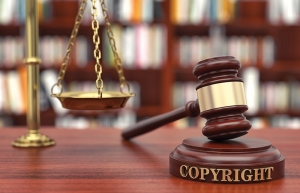Ensuring the legitimate rights of copyright owners
Every coin, however, has two sides. Some argue that copyright protection regimes stifle creativity because artists’ genuine creativity is constantly questioned and at risk of copyright infringement challenges, necessitating a close examination of each work’s originality to avoid a flood of copyright suits.
 |
| Hoa Tran, special counsel BMVN International LLC (left), Dat Nguyen, associate BMVN International LLC |
Under Vietnam’s Law on Intellectual Property, the key to copyright protection is self-creation, which meets the originality requirement. That said, even when copyright is independently created by an author based on their own research, the risk of copyright infringement remains.
This is due to the fundamental principle of copyright, which states that only the expression, not the ideas, is protected by copyright law. As third parties are permitted to create their works of art based on the same idea, such a principle may spark a copyright dispute.
Given this, the boundary of copyright conflict in each work of art is hazy, requiring careful assessment of the criteria “original works of authorship” to determine whether there is any copyright infringement. And, to some extent, the creativity in creating the copyrighted work is under the radar of strict copyright protection.
That said, copyright protection for works of art is not intended to restrict the authors’ freedom of expression or creativity. Instead, the current copyright protection regime ensures two criteria for a competitive business environment that is both sustainable and fair.
Copyright protection not only ensures the legitimate rights of copyright owners by granting them the exclusive right to control who can make copies or create works derived from the original works, but it also encourages author creativity since authors must be truly creative in producing copyrighted works without copying or freeriding on third-party copyrights.
Copyright protection is meant to foster creativity by safeguarding works produced as a result of the creative process. It would be ironic if it stifled that process. To be clear, copyright protection establishes boundaries for copyright holders to follow when creating their works in order to avoid copyright disputes.
Still, it does not limit or suffocate the creativity of copyright authors or the creation of copyrighted works. Rather, copyright protection encourages authors to come up with more creative works of art that reflect their uniqueness, resulting in genuine copyright creation and promoting a fair and transparent business climate.
Copyright disputes are sometimes unavoidable. However, there will always be room for genuine copyright authors to demonstrate and ensure their legitimate copyrights. Vietnam’s entertainment industry is booming and more Vietnamese companies are going global.
In order to be in the forefront of commercialising copyright assets and avoiding potential lawsuits, it is critical to note that as long as the copyrighted works are created honestly and without malice or unfair competition, the authors/owners of such copyrighted works can rest easy. That would be a strategy for any company looking to protect its copyrights during international economic integration, while ensuring creativity is promoted and thrives.
 | Conforming to treaty via Law on IP In the last few years, Vietnam has signed a certain number of international trade agreements which require Vietnam to accede to or approve the WIPO Copyright Treaty (WCT) within a prescribed time period. Partner Nguyen Thi Hong Anh and junior associate Vu Hoang Ha Thu of Indochine Counsel take a look at amendments and supplements made in the Law on Intellectual Property in June. |
What the stars mean:
★ Poor ★ ★ Promising ★★★ Good ★★★★ Very good ★★★★★ Exceptional
Themes: Digital Transformation
Related Contents
Latest News
More News
- Main drivers for Vietnam’s digital economy future (December 03, 2025 | 11:35)
- Pivotal stage of growth paves way for rise in M&As (December 03, 2025 | 10:00)
- Positive projections for M&A interest from Thailand (December 03, 2025 | 09:40)
- Manifesting the first line of defence in cybersecurity (December 03, 2025 | 09:00)
- The transformational role AI can play in accounting arena (December 03, 2025 | 08:00)
- Unlocking 5G-AI potential in Singapore (December 03, 2025 | 08:00)
- Data-driven strategies vital for a fast-evolving nation (December 02, 2025 | 09:41)
- Policy to practice: how Vietnam can lead the region (November 26, 2025 | 16:03)
- Mobilising private capital at scale vital for climate battle (November 26, 2025 | 15:36)
- VILAF and Yoon & Yang launch Vietnam - Korea Practice Unit (November 26, 2025 | 15:16)

 Tag:
Tag:





















 Mobile Version
Mobile Version